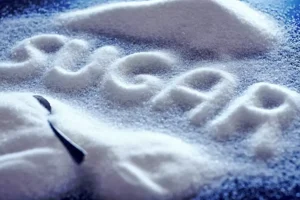-
Address: S.No.58 , 1st Floor , Paras Hub ,
Latur Road, Vasarni , Nanded - 431604 -
Call Us: +91 8799 932 678
info@instachem.co.in

The idea that a particular ‘addictive personality’ leads to the development of alcohol dependence is popular with some addiction counsellors, but does not have strong support from research. Often with patients in treatment for alcohol dependence, it is difficult to disentangle the effects of alcohol on the expression of personality and behaviour from those personality factors that preceded alcohol dependence. Nevertheless, people who are alcohol dependent have a 21-fold higher risk of also having antisocial personality disorder (ASPD; Regier et al., 1990), and people with ASPD have a higher risk of severe alcohol dependence (Goldstein et al., 2007). Recent evidence points to the importance of disinhibition traits, such as novelty and sensation seeking, and poor impulse control, as factors related to increased risk of both alcohol and drug dependence, which may have a basis in abnormal brain function in the pre-frontal cortex (Dick et al., 2007; Kalivas & Volkow, 2005).

What Does It Mean to Have a High Tolerance to Drugs or Alcohol?
However, crime and disorder costs amount to £7.3 billion per annum, including costs for policing, drink driving, courts and the criminal justice system, and costs to services both in anticipation and in dealing with the consequences of alcohol-related crime (Prime Minister’s Strategy Unit, 2003). The estimated costs in the workplace amount to some £6.4 billion through lost productivity, absenteeism, alcohol-related sickness and premature physiological dependence on alcohol deaths (Prime Minister’s Strategy Unit, 2003). The 2004 ANARP found that only one out of 18 people who were alcohol dependent in the general population accessed treatment per annum. Access varied considerably from one in 12 in the North West to one in 102 in the North East of England (Drummond et al., 2005). In terms of productivity, alcohol contributes to absenteeism, accidents in the workplace and decline in work performance.
Skeletal and muscle systems
- Indeed, evidence emerged that ethanol could disorder brain membranes and that chronic alcohol treatment resulted in tolerance to this action (Chin and Goldstein 1977).
- Thus, relative to cognitive studies, this area may have received short-shrift in formal testing.
- Environmental, genetic, metabolic, and behavioral factors that influence restitution of neurofunction have yet to be identified but are amenable to study with neuroimaging.
- If you drink regularly, alcohol changes the way your liver works, your brain function and creates dependence – meaning you need to drink more to have the same effect.
Several terms including ‘alcoholism’, ‘alcohol addiction’, ‘alcohol abuse’ and ‘problem drinking’ have been used in the past to describe disorders related to alcohol consumption. However, ‘alcohol dependence’ and ‘harmful alcohol use’ are used throughout this guideline to be consistent with WHO’s International Classification https://ecosoberhouse.com/ of Mental Disorders, 10th Revision (WHO, 1992). A recent alcohol needs assessment in England identified nearly 700 agencies providing specialist alcohol treatment, with an estimated workforce of 4,250 and an annual spend of between £186 million and £217 million (Drummond et al., 2005; National Audit Office, 2008).
Special Health Reports

The arrows indicate known directional connections between brain structures of the extended reward and oversight system. An outcome of this series of pathological studies was the development the New South Wales Tissue Resource Centre (Sheedy et al. 2008) at the University of Sydney, Australia, funded in part by the NIAAA. More than 2,000 cases of alcoholism and other neuropsychiatric conditions and controls are being obtained prospectively, with extensive antemortem characterization.
- Initially, the developmental sensitivity of NMDA currents to alcohol was observed in the hippocampus, but more recently this effect was found outside the hippocampus in pyramidal cells in the posterior cingulate cortex (Li et al. 2002).
- People who are severely alcohol dependent (with an SADQ score of 31 or more) will need assisted alcohol withdrawal, typically in an inpatient or residential setting.
- Even if you don’t recognise the symptoms above, there are varying degrees of alcohol dependence.
- As a group, alcoholics share this constellation of behaviors characteristic of frontal lobe dysfunction, which also can include impaired judgment, blunted affect, poor insight, distractibility, cognitive rigidity, and reduced motivation.
- Alternatively, compounds that target reward pathways may compensate for the plasticity in dopamine signaling that enhances the drinking experience of patients with AUD.
Finding treatment for alcohol use disorder
Not all alcoholics, however, exhibit impairment in all of these functions, thereby adding to the heterogeneity of the expression of the alcohol dependence syndrome. Recognition of which of these processes are spared and which are impaired in a given patient could provide an empirical basis for targeted behavioral therapy during periods of recovery. On a practical level, this depiction of memory abilities could mean that when provided with adequate aids, patients with KS may be able to enhance their otherwise fragile memory. Combined with evidence that alcoholic KS amnesia can range from mild to profound (Pitel et al. 2008), this possibility suggested that the brain substrate for amnesia could be different from another type of amnesia resistant to memory enhancement cueing (Milner 2005). If you can’t function properly in the morning without your cup of coffee, it could be that you are caffeine-dependent. When you miss your morning cup, you might develop physical withdrawal symptoms, like a headache, fatigue, difficulty concentrating, and more.

How can I tell if I’m dependent on alcohol?
Therefore, treatment staff need to be trained to identify, monitor and if necessary treat or refer to an appropriate mental health specialist those patients with comorbidity which persists beyond the withdrawal period, and/or are at risk of self-harm or suicide. Patients with complex psychological issues related to trauma, sexual abuse or bereavement will require specific interventions delivered by appropriately trained personnel (Raistrick et al., 2006). Another theme of fMRI studies has been the identification of reward, emotional control, and oversight systems in recovering alcoholics; youth with low versus high risk for developing alcohol use disorders; or in craving paradigms. In discerning emotional information suggested by pictures focusing on facial features, high-risk youth displayed less brain activation compared with low-risk youth, suggesting a predisposition for attenuated ability to interpret facial emotion (Hill et al. 2007).
- What researchers found 40 years ago is a likely reflection of the disorder seen today, but a mechanistic understanding of the full constellation of effects and the scope and limit of improvement with sobriety has evolved from being considered widespread and nonspecific to being specific in terms of brain circuitry and systems.
- This review describes the current knowledge regarding these factors, focusing particularly on the role of appetite- and volume-regulating hormones, the role of genetic variants of specific transcription factors and the function of epigenetic alterations in the genomic sequence of candidate genes for alcohol dependence.
- A CRF antagonist that acts on both the CRF1 and CRF2 receptors (i.e., a nonselective peptide CRF antagonist) called D-Phe-CRF12–42 reduced excessive drinking in dependent animals when administered into the brain ventricles (Finn et al. 2007; Valdez et al. 2002) or the central nucleus of the amygdala (Funk et al. 2006).
- The longer you drink, the worse your physical dependency on alcohol will become, and the harder it will be to get sober.
- These analyses found that a change in processing strategy occurs, where alcoholics use inefficient neural systems to complete a task at hand because the preferred neural nodes or connecting fiber tracks are compromised.
- Over the past 40 years, rigorous examination of brain function, structure, and attending factors through multidisciplinary research has helped identify the substrates of alcohol-related damage in the brain.
- The physical harm related to alcohol is a consequence of its toxic and dependence-producing properties.
